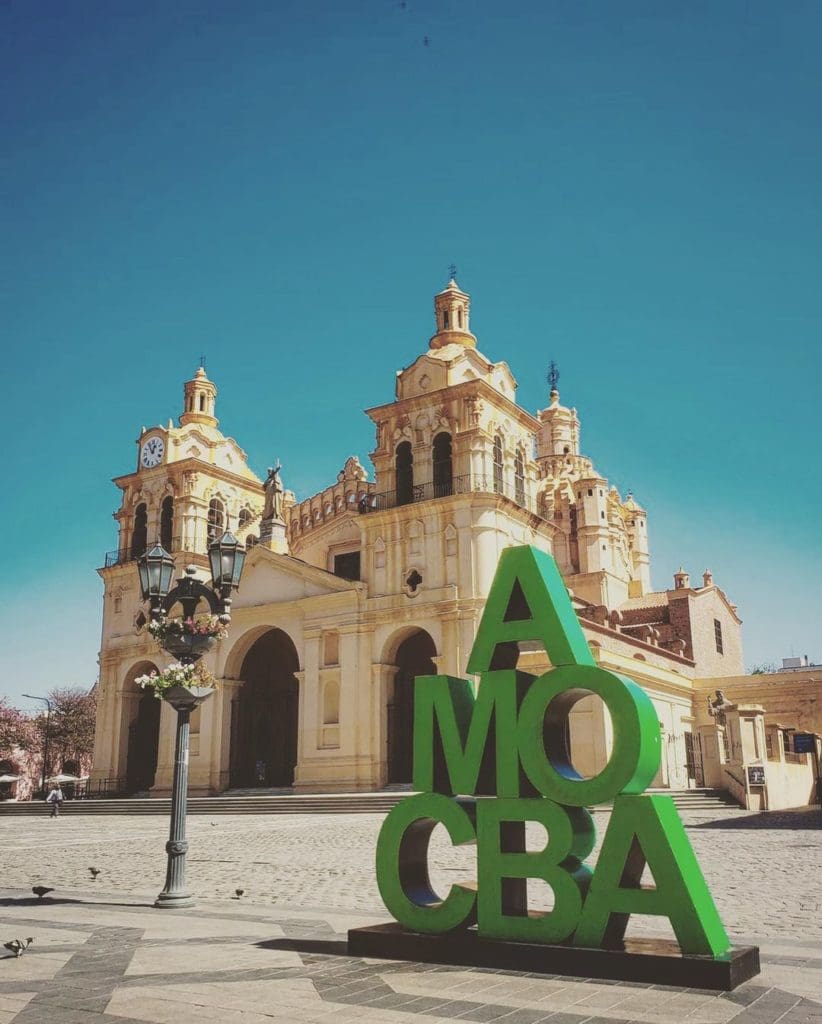In this blog, we are going to tell you all the reasons why we think you should definitely visit Córdoba, one of the most important cities in Argentina. We’ll tell you about its history, the best places to visit, its customs and all about the cordobés accent.
Córdoba, Argentina: History and Places
Córdoba it’s the second-largest city in Argentina and has one of the oldest public and free universities of South America, the National University of Córdoba. It’s a beautiful city with a lot of history, surrounded by mountains and full of cultural activities and nightlife. As well as an important industrial centre of the country, with two car factories, Fiat and Renault, and the Argentine Factory of Aeroplanes, FAdeA.
The province of Córdoba also invented the costume of drinking Fernet with Coca-Cola, with a proportion of 70/30. This beverage was recognized by the International Bartender Association (IBA) on their list. Thanks to that, Argentina is the only other country besides Italy where Fernet Branca is produced.
Due to its central location in the country, plenty of students choose Córdoba to live and continue their studies. For two whole centuries, the National University of Córdoba was the only one in all the country. This is why the city is called “La Docta”.
How To Get To the Córdoba City (Ciudad de Córdoba)
You have four ways of travelling to the city of Córdoba from Buenos Aires. You can take a flight, a bus, a train or you can take the car and make a fun road trip.
Flying to Córdoba
From Buenos Aires, the airlines available are Flybondi, Jetsmar (these two are low-cost), and Aerolíneas Argentinas (Argentine flag carrier).
There are also international flights arriving at the Airport of Córdoba, such as Brazil (Gol Airlines), Panamá (Copa Airlines), Europe (Air Europe), Chile (Latam). Nowadays because of Covid, are only enabled Río de Janeiro and Panamá, Lima (Perú), Asunción (Paraguay), Madrid (Europe) since February 2022. Please do check this information before flying because it may vary.
At the Airport of Córdoba, you have two places where you can grab a bite: Havanna (an Argentinian brand from Mar del Plata) and Moka&Deli. They offer sandwiches and drinks.
Going to Córdoba By Bus
From the bus terminal in Retiro, you have all these options: Urquiza, Chevallier, El turista, 20 de junio, Sierras de Córdoba, Encon, Vía Bariloche, Via Tac. The companies from Córdoba are: El turista and El Prático. If you take a long-distance bus, you can choose between three different categories: semi-cama (semi bed), cama (bed) and suite (you can turn the seat into a kind of bed). Prices vary depending on the category.
Córdoba By Train
From Retiro Station, you can take a long-distance train to Córdoba. The train is the cheapest option but the trip takes 21.5 hours to get there. You can buy a stateroom and the train has a dining car. There are two trains a week.
Traveling to Córdoba By Car
Thanks to the highway, it takes approximately 8 hours to get to Córdoba from Buenos Aires taking route 9. If you have a car or you want to rent one, it could be a fun and economical option for more than 2 people. On the trip, you’ll pass the city of Rosario (Santa Fe province), which is the third most populated city of Argentina.
Córdoba’s Unique Spanish Language
If you begin to travel all across Argentina, you’ll see that how we talk, depending on the province, may change. Sometimes it could be very subtle. For example, in the province of Buenos Aires people always say porteños (those who are from the city of Buenos Aires) talk way too fast. Other times it could be a very strong difference like it happens with cordobeses.
The way they phrase words could sound like a little song, with ups and downs. Is very noticeable, especially in Córdoba Capital. Many try to imitate it, but it’s not that easy.
They also have their vocabulary, here are some examples:
- Culiao: It’s an adjective. It could be used with a negative or positive connotation. It’s also a way of referring to a person in a loving way, similar to “boludo”.
- They commonly add the pronoun “la” or “el” before the name of a person. For example El Mario, La Paula, La Mariana, and so on.
- Fernando, Fernandito: This is the word they use to call the beverage made with Coca-Cola and Fernet, which is originally from Córdoba.
- Muy mucho: It could translate as “very much”. It’s used to reinforce and exaggerate a phrase. Example: “Aqui canta un caminante que muy mucho ha caminado, y ahora vive tranquilo en el Cerro Colorado” (Here sings a walker that have walked very much, and now lives quiet in Cerro Colorado”.
- Cuchá: Instead of saying “escuchá” (listen as a command), they cut this word.
- Pipicucú: It’s an adjective, it means pretty or beautiful. Example: “Esa camisa te queda pipi cucú”.
- Chupadazo: It’s an adjective used to refer to a drunk person.
- Pororó/Pururú: It’s another name for pop-corn.
- Criollo- Criollitos: It’s another word for saying “bizcochitos” or “libritos”. We usually eat criollitos when we drink mate.
You should ask a cordobés or a cordobesa what other words they could think of!
Best Places to Visit in Córdoba
Paseo del buen pastor
It used to be a women’s and minor’s prison. Now it’s a cultural and commercial center in the heart of the city. Here you can see “El espectáculo de las aguas danzantes”, a spectacle of streams of water from the fountain dancing alongside music and lightning. The schedule is at 6 pm, 7 pm, 8 pm, and 9 pm.
Address: Av. Hipólito Yrigoyen 325.
La Cañada
La cañada is a natural waterway-stream surrounded by stone walls that meanders through the city center. It’s a pretty and quiet place where you can go for a walk.
La Iglesia de los Capuchinos
Behind the Paseo del Buen Pastor, you’ll find this majestic and colorful church. It belongs to the Franciscan order. It was chosen as Cordoba’s first artificial wonder.
Address: Buenos Aires 600-699
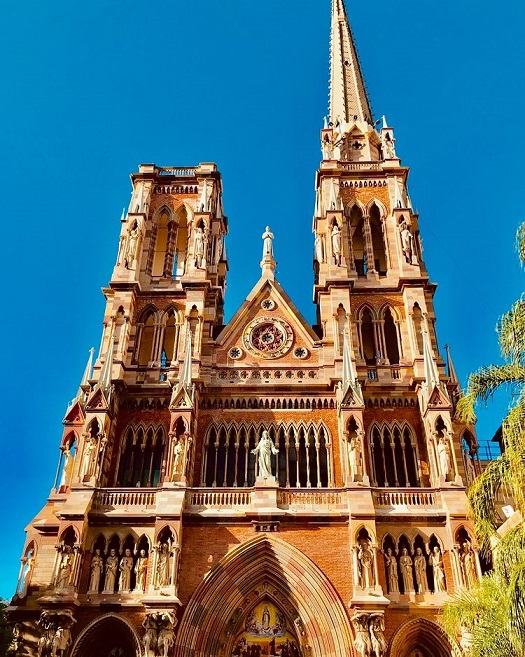

Panal de abejas City Hall
This is one of the first things you see when you enter the city, especially if you take a long-distance bus. It has a unique design with a deconstructivist style: it imitates a honeycomb with holes in it. It is 45 meters long. The governor lives on the last floor. The locals call it “El Panal“. It also has a parking space, an auditorium and the different provincial ministries.
Address: Rosario de Santa Fe 650


Barrio Guemes Market and Paseo de Las Artes
In the stylish barrio Güemes you’ll find loads of bars and restaurants, and also an open sky Market. It opens on Saturdays, Sundays and holidays when the streets close only for pedestrians. It has a wide variety of objects: games for children, artwork, plants, books, clothes, mates, decoration objects, antiques, and more!
Where to Stay in Córdoba: Hotels, Boutique Hotels and More
Yrigoyen 111
It’s an elegant, modern and big hotel located in the center of the City, a few blocks away from the Paseo del Buen Pastor, and very close to the Patio Olmos Shopping. The building was restructured from an old 20th-century mansion.
It has a variety of rooms for you to choose from, alongside a terrace with a beautiful panoramic view of the city and a swimming pool. It has breakfast included.
Address: Av. Hipólito Yrigoyen 111
Ciudad Prado
A bit further from the center of the city, there’s this charming and comfortable hotel boutique. It has a family atmosphere and it’s perfect if you’re looking for quiet and rest. Is an eco-friendly hotel with solar panels and plants everywhere. Plus, it has a beautiful patio where you can have breakfast, which is included.
Address: Arturo M. Bas 2470
Things to Do in Córdoba
Take the Córdoba Tren de las Sierras (The Mountain’s Train)
It begins in the city of Córdoba: you can take it to the Train Station of Alta Córdoba, and it takes you to eleven different places between the hills of Córdoba. One of the stations is Cosquín, located in the Punilla Valley. Here takes place the musical Festival “Cosquín Rock”. The train works only on Saturdays, Sundays and holidays.
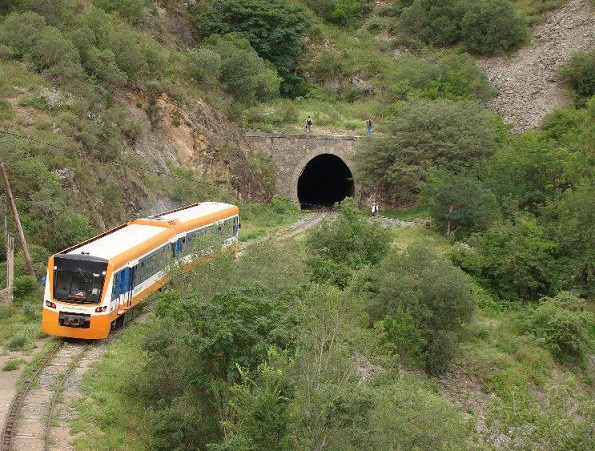

City Tour Córdoba
Just like the yellow tour bus in Buenos Aires, there’s a bus for you to get to know the city while you are comfortable. It takes you to all the landmarks in the city and there’s a tour guide to explain all the history. The starting point is in the City’s Cathedral.
The trip lasts an hour and a half.
Webpage: https://www.facebook.com/cordobacitytour/
Patio Olmos
If you want to go shopping It has more than 150 shops, a movie theater and a food court.
It’s one of the most important buildings in the city due to its architecture.
They created a contest for young sculptors to enhance the art production and its circulation.
During Christmas time, you can go to get your photo taken with Santa. It’s open every day.
Address: Av. Vélez Sarfield 361
Córdoba: Cultural Places, Activities and Centers
Manzana Jesuítica or Manzana de las luces
It was declared as a world heritage site by the ONU in the year 2000. It’s part of the historical district of the city. It includes the Capilla Domestica (the domestic Chapel), the National College of Monserrat, the Church of the Company of Jesus (one of the most important churches of the city), and the first Rectorat building of the National University of Córdoba. These blocks were inhabited by the members of the Company of Jesus, also known as Jesuits in the 17th century, who had a big influence in the history and origins of Córdoba. They were also the initiators of higher education in Argentina.
Address: Obispo Trejo 300-398
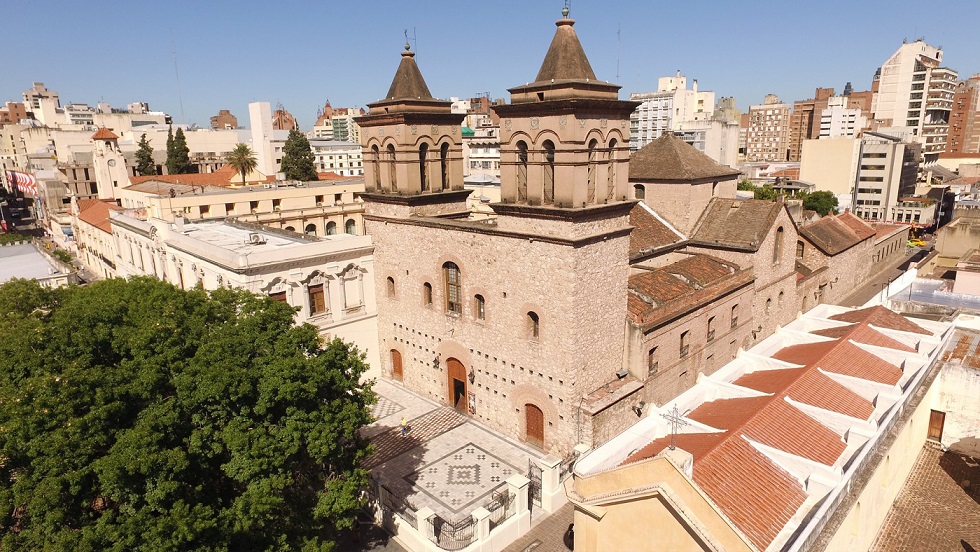

Teatro del Libertador “General San Martín”
This theater is a National Historic Monument, like the Teatro Colón for the Porteños.
It’s the main theater of the city and the home of the academic Orchestra, the ballet group and the choir of Córdoba. You can buy tickets to see the choir live, a ballet performance
They also offer some free entertainment from time to time.
Address: Av. Vélez Sarfield 365
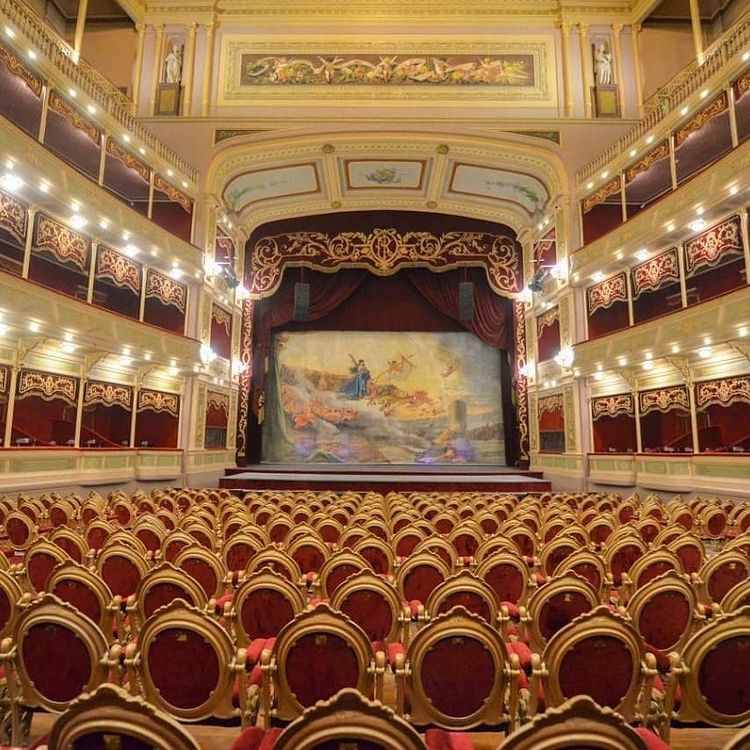

Palacio Ferreyra – Museo Superior de Bellas Artes Evita
The Palace has a french architecture style. It exhibits the art collection of the province of Córdoba. It has 12 halls with permanent exhibitions with works of different artists such as Emilio Caraffa, Fernando Fader, and Benito Quinquela Martínez. It offers a collection of sculptures. It also has a library and an auditorium.
It has guided visits from Tuesdays till Fridays at 12 pm and 5 pm, and on the weekend at 11 am and 5 pm. The entrance is very affordable.
Address: Av. Hipólito Yrigoyen 511
Espacio Quality
It functions as an event venue where famous Latin-American artists go to perform, like Jorge Drexler, Palito Ortega, Luciano Pereyra, Miranda and Bad Bunny. The Space works as a nightclub with different parties and DJs. It also offers shows for children.
Address: Cruz Roja Argentina 200
Best Restaurants in Córdoba
Santa Calma
In Parque Sarmiento, surrounded by trees and green there’s Santa Calma, a restaurant with a huge space and tables outdoors. It has a great selection of breakfasts and snacks, natural fruit juices, salads, desserts, pizzas made with sourdough and cocktails.
Plus, it offers vegetarian and vegan options such as the “lomito de seitan sandwich”, instead of loin of veal, it’s made with seitan (vegetable meat). It’s pet friendly. Sometimes they have live music.
Address: Av. Deodoro Roca S/N
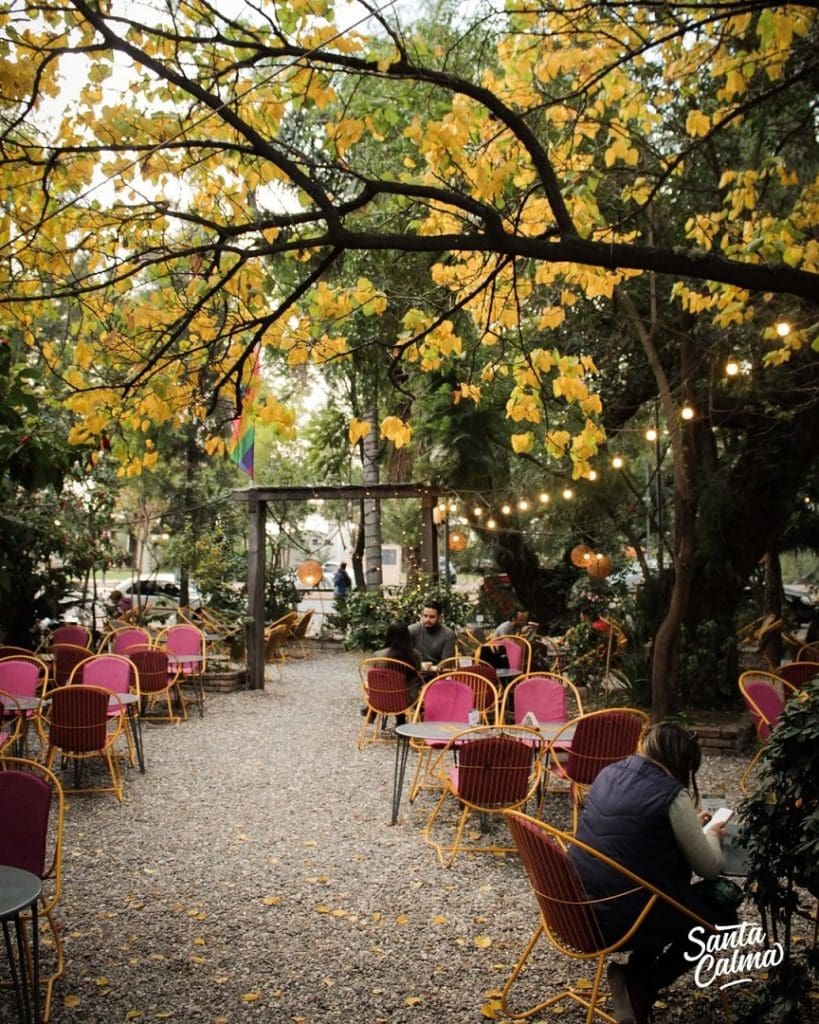

Pizzería Popular
This pizza is made in a wooden oven and it’s the best there is in Córdoba.
We recommend the option “popular”, it has mushrooms, blue cheese, provolone cheese and green onion, and “4 Formaggi”, a four-cheese pizza. Besides pizza, they have in their menu sandwiches, salads, pasta, and fainá. They also have gluten-free pizzas and a vegan option called “Marinara”. They have locations all around the city of Córdoba and also in Villa Carlos Paz. They also offer a delivery service.
Address: Fructuoso Rivera 260, Local 12, Galería Muy Güemes
Galo Wines – Wine Bar
In the beautiful neighborhood called Barrio Jardín, you can find this beautiful wine bar with a restaurant with a sophisticated atmosphere. It has more than 500 options of wine. They have a sommelier who can help you choose the correct wine for you. You can also rent the place for events and corporate events. On the menu, they have tapas and cheese and cold cuts platters, salads, burgers, grilled meat and desserts. We suggest you try the beef brochette or the vegetarian wrap. Sometimes they have live music. They have inside and outdoor tables for you to choose from.
Address: Colpina 1375, Barrio Jardín
Medialunas Calentitas
They are originally from Punta del Este, Uruguay. It’s a great spot to have breakfast. They sell medialunas filled with different things: medialunas with ham and cheese (an Argentinian classic), medialunas filled with custard, with dulce de leche, with Nutella, with diverse jams, and catupiry (it’s a soft Brazilian cheese). They also sell infusions, juices and salty options.
Address: Obispo Trejo 957
El Dante
It’s a food stand on the street in Parque Sarmiento. Here you can buy the best “choripan” (a famous Argentine sandwich made with hard pork sausage and bread, typically spiced with “chimichurri”) in Córdoba. They have an open kitchen and different toppings. They have benches where you can sit while you eat and enjoy a panoramic view of the city. It’s open 24/7.
Address: Av. Del Dante 0, Rotonda del Dante Parque Sarmiento
Best Parks and Gardens to Visit in Córdoba
Parque del Chateau
It’s a large park with 14 acres of native forest, it has more than 1000 native trees. It has a playground for children and a free parking space. It’s the perfect place to go drinking mate or have a picnic. Take your children with you! You can also go for a run here or roller-skate.
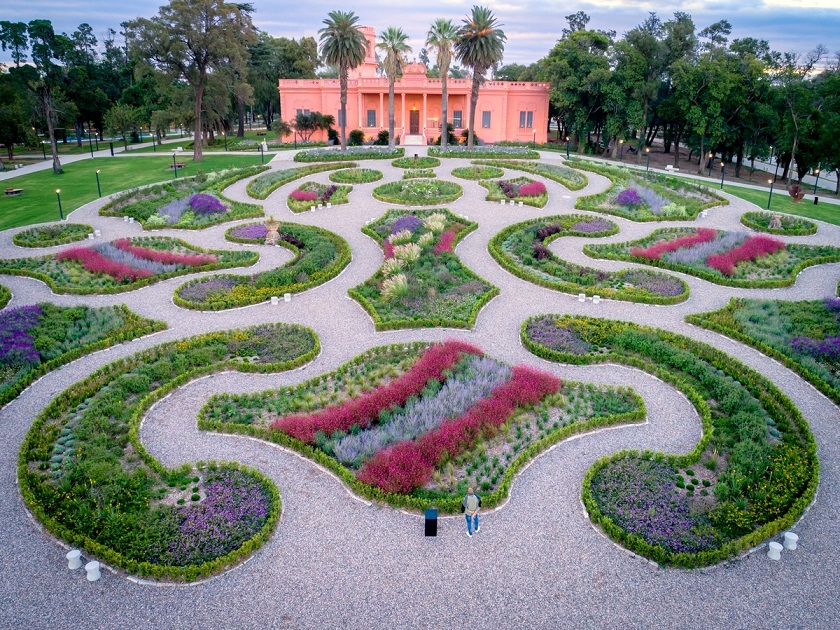

Parque del Kempes
Next to the Football Stadium Mario Kempes, which is the second-largest stadium in the country after El Monumental (Buenos Aires), there’s this beautiful park and recreational site. It was built to be a location for the Football Worldcup in 1978, during the last dictatorship in the country. Many artists played here: Paul McCartney, Madonna, Shakira, Aerosmith. It’s in front of the Parque del Chateau.
Address: Ramón Cárcano 1800
Music from Córdoba: The cuarteto
The cuarteto is a musical genre that was born in Córdoba from popular culture. Is influenced by other genres such as the Pasodoble, the Tarantella and tropical music. The music in the cuarteto was originally made out of 4 instruments: piano, double bass, violin and accordion. Now, there’s also percussion, wind instruments, guitars and sometimes even synthesizers.
The cuarteto is always present in Argentine parties and events such as weddings. It has a very characteristic dance.
Initially, it was popularized by the singer Carlos “La Mona” Gimenez who started singing at 16 years old. And later by Rodrigo Bueno, who sold out thirteen Luna Parks in April 2000 (the mythical stadium located in Buenos Aires, Av. Eduardo Madero 470). Rodrigo managed to expand the cuarteto all across the country and thanks to his charisma and catchy songs became an Argentine popular idol. His songs are well known by the vast majority of the Argentine population who know for example the lyrics of the song “Soy Cordobés” (I’m from Córdoba) by heart.
He died in a car crash at 27 years old. Nowadays, Ulises Bueno, Rodrigo’s brother, is a musical reference of the cuarteto.
Alfajor Cordobés: Where to Find This Typical Food
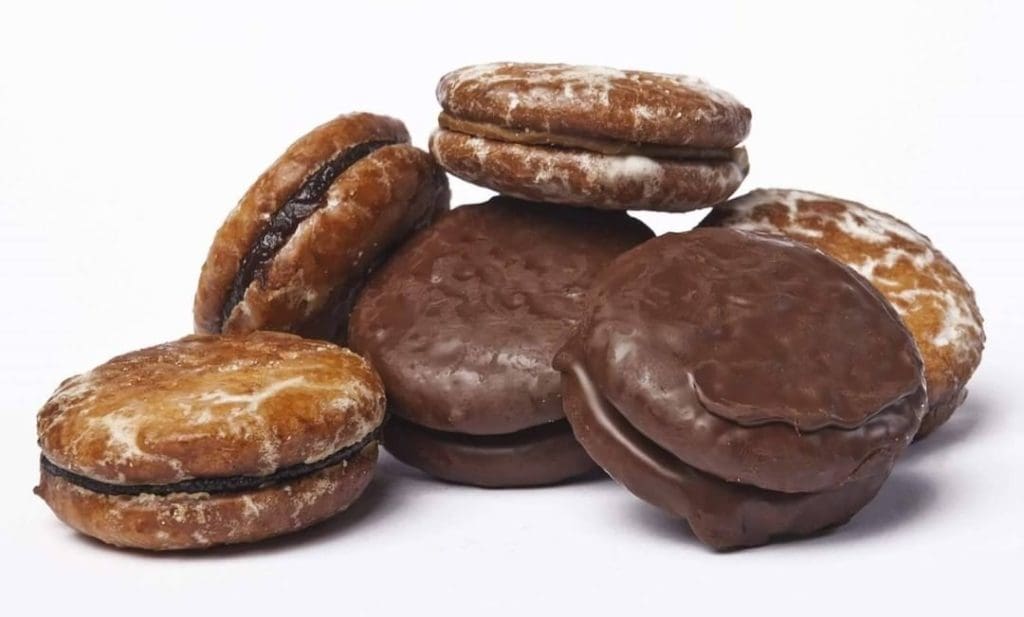

If you come to Argentina, you have to try the alfajores: it’s a sweet made with two tops, typically filled with dulce de leche -but there are also ones filled with cream, fruit jam, chocolate- and covered with a chocolate bath. Córdoba has its unique kind of alfajores, with its recipe.
One of their special features is that they are not covered with chocolate, they’re covered with syrup.
The majority of the factories that make these alfajores are located in the province of Córdoba. You can buy only one or you can buy a box of 6 or 12. In Villa Carlos Paz, the traditional box of alfajores comes with three different flavors: dulce de leche, quince jelly and pear jam.
Some of the most famous brands you can try are Chammas, La Quinta and Estancia del Rosario. They sell it in the airport and all around the city.
They also have“colaciones”, which are made with the same ingredients as the alfajor but only using one top.
We believe you should visit Córdoba, either by its history, its gastronomy, its nightlife, or maybe just because it’s a getaway city to the mountains and hills of Córdoba and its beautiful natural landscape. Either way, you’ll love it! And you’ll get to talk with cordobeses with their unique accent and drink loads of fernet.
Updated on 19 September 2022
Cordoba is a beautiful Argentine city located in the Andean foothills. It’s known for its colonial architecture, from the 16th-century Manzana Jesuítica to Cordoba Cathedral. The neoclassical Cabildo, or town hall, contains a museum with Spanish and indigenous artifacts. With a lively university scene, Cordoba is considered the second-largest city in Argentina after Buenos Aires. Read on for our comprehensive guide to all things Cordoba!
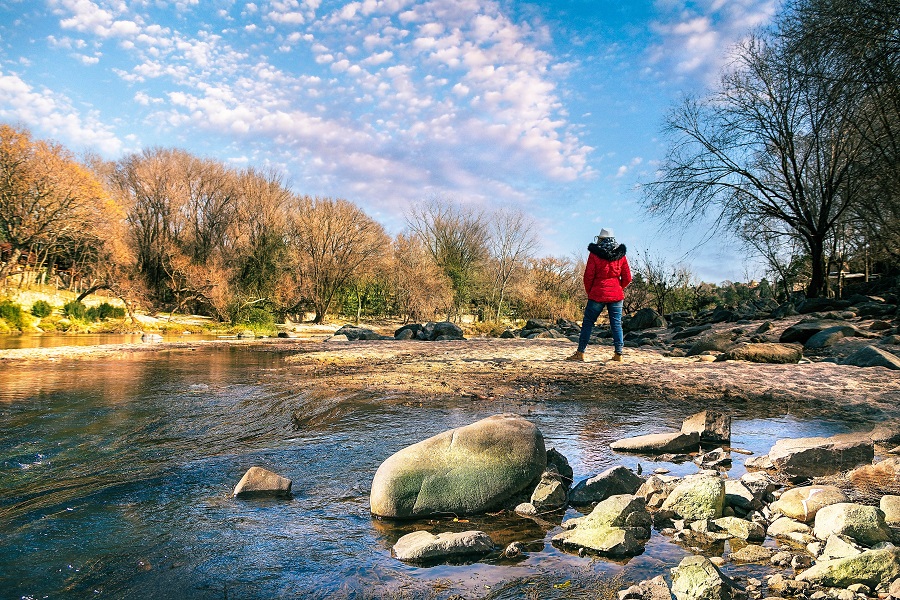

History of Cordoba:
Cordoba was founded on July 6, 1573 by Jerónimo Luis de Cabrera, who named it after Spain’s largest city, Córdoba. The capital of the Valliserrano region, it formally became a city on May 3, 1618. Its strategic location between Lima and Buenos Aires made it a hub for trade routes and an important stopover point for travellers.
Cordoba was one of the first cities in South America to have electric lighting, thanks to an hydroelectric plant built on the Río Tercero in 1883. It also had one of the continent’s earliest tramways, which started operating in 1890. In 1912, due to its growing importance and population (it was Argentina’s third-largest city by then), Cordoba was declared a province.
The 5 Best Places to Visit in Cordoba Province, Argentina
Located in the center of the country, Cordoba Province is one of the most visited places in Argentina. With its beautiful landscape, rich culture, and abundance of activities, it’s no wonder why! Here are the 5 best places to visit in Cordoba Province:
The City of Cordoba:
As the capital of Cordoba Province, the city of Cordoba is unsurprisingly the most popular destination in the province. Home to over 1.4 million people, Cordoba is a bustling metropolis with something for everyone. Whether you’re interested in history, art, food, or nightlife, you’ll find it all in Cordoba. Don’t miss out on seeing some of the city’s most famous attractions, such as the Jesuit Block (a UNESCO World Heritage Site), the Manzana Jesuítica (the largest single site associated with the Jesuits), and the Iglesia Catedral Metropolitana (the largest cathedral in Argentina).
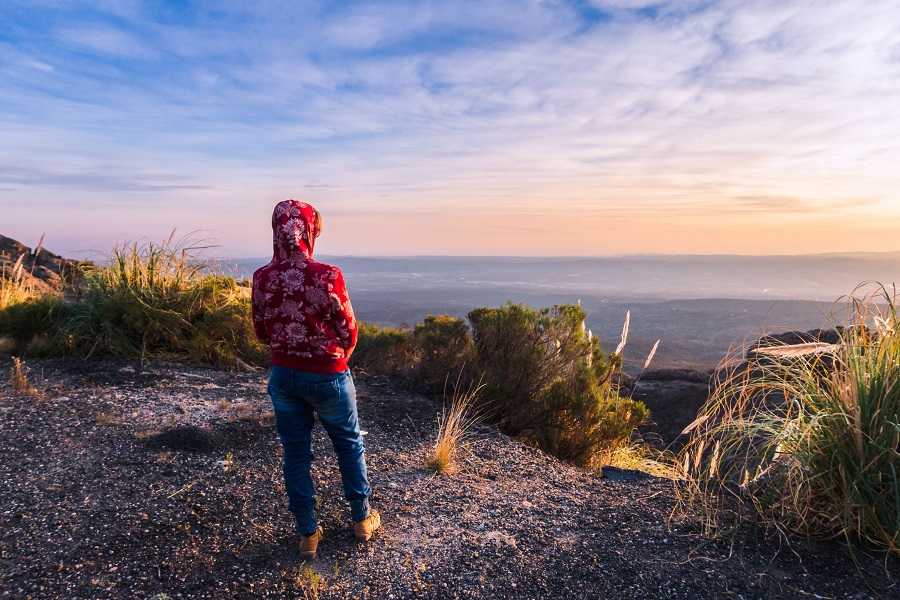

Sierra de los Comechingones Natural Park:
Located just outside of Cordoba city, Sierra de los Comechingones Natural Park is a must-visit for nature lovers. Covering nearly 200,000 hectares (around 494,000 acres), the park is home to a diverse array of plant and animal life, as well as some incredible scenery. Hiking and camping are popular activities in the park, and there are also several tour operators that offer guided excursions.
Valle de Calamuchita:
Valle de Calamuchita is a picturesque valley located in southwestern Cordoba Province. The valley is home to numerous small towns and villages, each with their own unique charm. Visitors will find plenty of opportunities for hiking and mountain biking in Valle de Calamuchita, as well as horseback riding and paragliding. For those looking to relax and take in the stunning scenery, there are also several thermal springs scattered throughout the valley
La Cumbrecita:
La Cumbrecita is a small hamlet located 1,450 metres (4,757 ft) above sea level. It is situated in the Calamuchita Valley in the Grand Sierras of Córdoba and its one of the most wonderful places to visit in Cordoba.
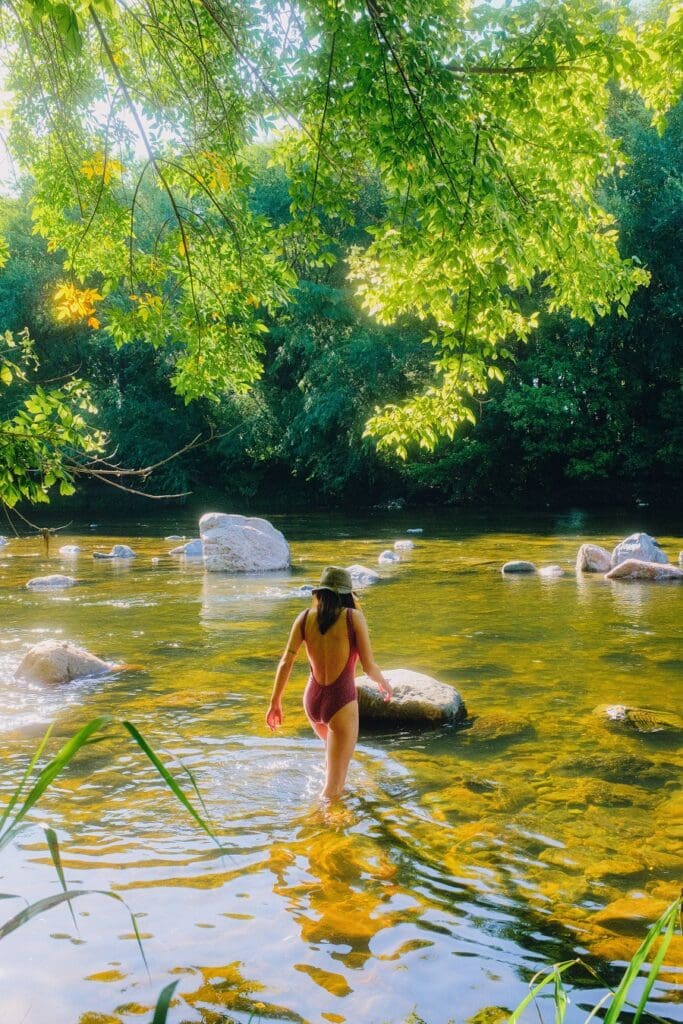

Things to Do in Cordoba:
Cordoba is a lively city with plenty to see and do. Check out some of the top attractions below!
Museums:
For art and history lovers, there are several museums worth visiting in Cordoba. The Museo Provincial de Bellas Artes Dr Partment houses a collection of European and Argentine artists from the 19th and 20th centuries. The Museo de la Iglesia Catedral has an exhibit on the history of Christianity in Cordoba as well as religious art from Paraguay and Peru. The Museo Emilio Caraffa is an art museum that contains works by local artists from different periods.
Parks:
If you need a break from all the sightseeing, head to one of Cordobas many parks! Parque Sarmiento is the biggest park in the city and boasts gardens, ponds, playgrounds, and sports facilities. Parque de las Naciones is a smaller park but no less beautiful; it has waterfalls and flowers galore. Lastly, Parque España is a verdant oasis with fountains, streams, and sculptures. It’s perfect for a leisurely stroll or picnicking with friends.
Whether you’re looking to explore Cordobas rich history or simply want to enjoy its natural beauty, this Argentine gem has something for everyone! So what are you waiting for? Start planning your trip today!
Hey there! I’m Maria Olson, your go-to nomad with a suitcase in one hand and a pen in the other, forever caught in the dance of Buenos Aires’ energy and Malaga’s serene vibes. My life’s an open book of travels, stitched together by the countless cultures I’ve embraced and the languages that now flow from my tongue as easily as my native speech. Speaking Spanish, English, French, German, and Russian isn’t just a party trick; it’s my way of unlocking the world’s secrets, one conversation at a time.
But let’s talk about the real spice of life—food. My adventures are nothing without the flavors I’ve savored and the culinary treasures I’ve unearthed along the way. Whether it’s diving into Argentina’s vibrant markets or sipping on sangria in a hidden corner of Spain, I bring these experiences to the table, sharing a slice of the world through my tales.
Crafting blogs for VAMOS Academy, I blend my wanderlust with a dash of creativity to serve up content that’s as unique as the journeys that inspired them. So, if you’re itching for adventure, hungry for a taste of the unknown, or simply curious about the art of language, you’re in good company.



